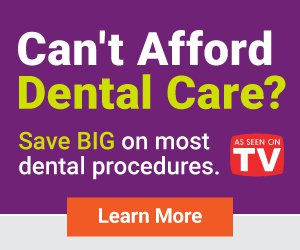Need a Tooth Pulled? Tooth Extraction FAQs
Getting a tooth pulled seems like a scary thing. Removing a tooth must be painful, right? You may be surprised to learn that a tooth extraction is a pretty routine procedure. It’s relatively painless, quick, and it’s probably more necessary than you think.
If you have dental anxiety about tooth extractions, we’re here to put your mind at ease. Having a tooth pulled shouldn’t be a scary thing. And the more informed you are about what to expect, the less scared you’ll be.
Why Do You Need to Have a Tooth Pulled?
There are a number of reasons why your dentist may recommend removing a tooth. However, it’s important to know that removing a tooth is always a last resort procedure for any dental professional. If your tooth can be saved, it will be. Unfortunately, your tooth may not be worth saving.
Here are the most common reasons why your dentist wants to pull out your tooth:
- Tooth decay: An infection like tooth decay poses great risks to your health. Untreated tooth decay can lead to heart attacks and strokes. If your infection is beyond treatable, removing your tooth may be your best option.
- Overcrowded mouth: Sometimes, your teeth aren’t aligned properly, or too many of them try to fit into a small space in your mouth. Removing a tooth from an overcrowded mouth is a common way to ensure a healthy and beautiful smile.
- Risk of infection: If you’re going through chemotherapy or having an organ transplant, your immune system is compromised. Trying to avoid an infection in these cases can often result in getting a tooth removed.
- Tooth injury: If you break your tooth so severely that it’s impossible to save, the dentist will pull out the remaining bit to give you options of replacement.
What to Expect When You Get a Tooth Pulled
Knowing what to expect from a routine tooth extraction can help you conquer your fears of it.
What to Tell Your Dentist Before You Get a Tooth Pulled
Although having a tooth pulled is a fairly safe procedure, you do become more at risk of infection until you heal. Taking antibiotics can help prevent a bacterial infection. That’s why it’s crucial to inform your dentist of any medications you take.
You should also tell your dentist if you’re affected by any of these conditions:
- Damaged or man-made heart valves
- Congenital heart defect
- Impaired immune system
- Liver disease (cirrhosis)
- Artificial joint, such as a hip replacement
- History of bacterial endocarditis
The Steps of a Tooth Extraction
Usually, a dentist or an oral surgeon will extract your tooth. These are the steps of a general tooth extraction:
- Local anesthetic or anesthesia: The dentist will inject a local anesthetic straight to the site of your extraction and possibly your tongue. You’ll probably feel a numb sensation. This will prevent you from feeling any pain.
- Cutting away gums: If the tooth that you’re getting extracted is impacted (not above your gum line yet), the dentist will have to cut away the gums above it to gain access to it.
- Removing the tooth: Next, the dentist will use a pair of pliers to grab and pull the tooth. If your tooth is too hard to pull, the dentist may need to cut it into pieces and extract them individually.
- Gauze: Once the tooth is out, a blood clot will form in its place. The dentist may ask you to bite on a piece of gauze to stop the bleeding.
- Stitches: Finally, the dentist will sew up the extraction site with stitches. Usually, they’re self-dissolving, so you won’t need to worry about getting your stitches taken out.
What to Do After You Had Your Tooth Pulled
After your tooth extraction, your mouth will probably be numb. The dentist will send you home to recover. It will take a couple of days till your mouth’s sensation returns to normal.
It’s crucial to follow the dentist’s instructions on after-extraction care.
- Make sure you take the painkillers and antibiotics prescribed to you.
- Avoid aspirin, as it thins your blood and makes you prone to bleeding more.
- Leave the gauze pad for 3-4 hours after surgery. Bite down on the gauze to reduce bleeding and allow a blood clot to form. Change gauze pads regularly.
- Applying ice to your jaw can reduce the swelling. Make sure you don’t apply ice directly to the skin, and only ice for about 10 minutes.
- Allow yourself time to heal.
- Avoid coughing or sneezing to the best of your ability.
- Avoid spitting forcefully in the first 24 hours after surgery.
- Don’t smoke. Smoking will inhibit healing.
- If you lie down, prop your head up with pillows. You may bleed more if you lay flat.
- Continue brushing your teeth and flossing, but avoid brushing over your extraction site.
Answering Your Most Common Questions About Tooth Extractions
Does a Getting a Tooth Pulled Hurt?
A tooth extraction shouldn’t hurt. You get local anesthesia or general anesthesia to prevent any pain.
However, when it wears off, the socket of your extraction site can definitely be painful. Taking painkillers and antibiotics will help with that.
How Long Does It Take to Pull a Tooth?
How long it takes to pull a tooth depends on where it is, how covered it is, and how strong your dentist is.
Tooth extraction can take anywhere from 30 seconds to 30 minutes.
How Long Does a Tooth Extraction Take to Heal?
All mouths are unique, so there is no single consensus on how long tooth extractions take to heal. For most patients, the socket makes a full recovery in around 3-4 weeks.
However, it may happen a little faster for you or a little slower. The jaw bone will take much longer to heal, but this should become a mostly painless process after the socket has recovered.
Can I Take Painkillers Before Getting a Tooth Pulled?
Consult your dentist about any medication you take, and about what painkillers you can have before surgery.
The one painkiller that you absolutely want to stay away from when you’re having a tooth extraction is aspirin. It thins the blood and will make your wound bleed more intensely.
Why Is My Extraction Site Sharp?
There is a possibility that you might feel sharp edges in and around the extraction socket following recovery. This is usually nothing to worry about.
It is quite normal for tiny fragments of the socket to become dislodged and make their way to the surface. They should come loose on their own and you will either safely swallow them or spit them out.
What If My Extraction Site Really Hurts?
Unfortunately, for the first few weeks, you are going to have to be patient. While the pain should not be intense, it may present itself as a dull ache in or around the socket.
There is not much that can be done about this apart from taking painkillers. If you are struggling with the level of pain, ask your dentist for advice.
Occasionally, you may have a dry socket. This is when a blood clot didn’t form, and the bone of your jaw meets the open air. This can be incredibly painful. In this case, the dentist will place a sedative dressing over the socket to protect it.
What Can I Eat After Tooth Extraction?
It’s best to avoid eating for a couple of hours after your surgery. In the first 24 hours, avoid eating with a straw. And for the next two or three days, stick to soft foods.
Yogurt, apple sauce, soups, and smoothies are great options after tooth extraction. You can gradually start eating hard foods as your extraction site heals. Avoid spicy or acidic foods if you want to avoid pain.
Save Money When You're Having a Tooth Pulled
Tooth extractions may seem like a daunting procedure, but they’re necessary if the dentist recommends them. Luckily, you don’t have to pay full price for getting a tooth removed.
Although the dentist pulls your tooth, it doesn’t mean they have to pull all the money from your wallet. With a Carefree Dental Card, you can unlock incredible savings at participating dentists.
Save between 15-50%* per visit on your tooth extraction in most instances. Learn more when you sign up for a Carefree Dental Card today!
The Carefree Dental blog is not meant to be a substitute for professional medical advice, diagnosis, or treatment. The text and pictures within the content are intended for information purposes only. Readers should consult with a licensed dentist or healthcare professional before seeking treatment.
The Carefree Dental Card is not insurance and Carefree Dental is not an insurance provider.





